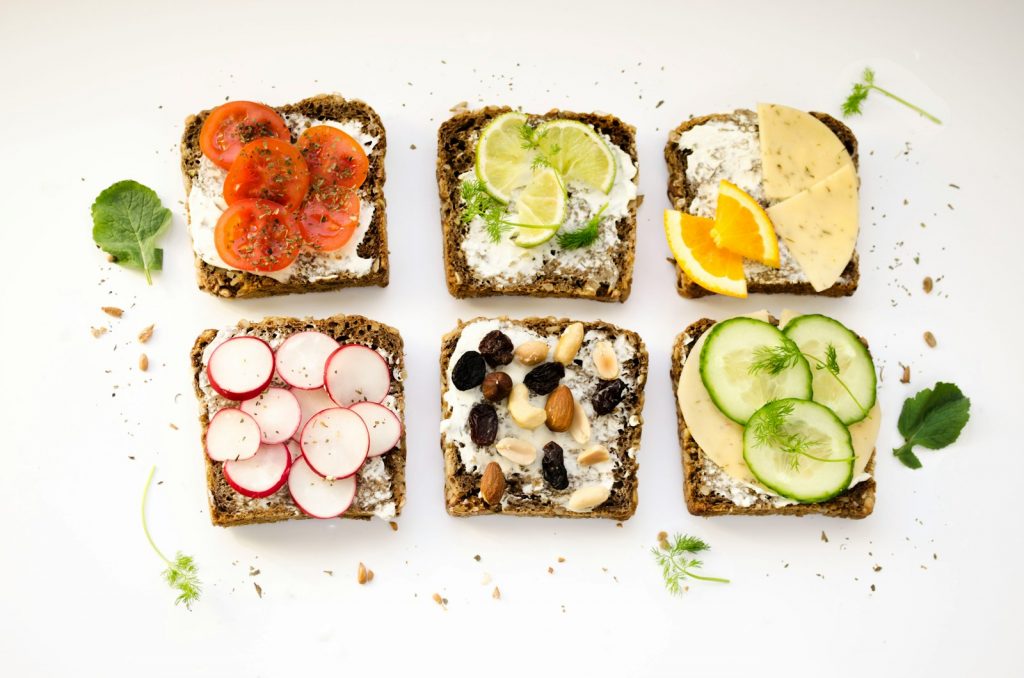How to Create SMART Nutrition Goals and Stick to Them
Ever set a nutrition goal that seemed super exciting at first, only to fizzle out after a week or two? Yeah, me too. It’s like, we start with the best intentions, but somehow life just gets in the way. Maybe you’ve vowed to eat more veggies or cut down on sugar, but then those delicious pastries at LIDL keep calling your name. Sound familiar? Well, that’s where SMART nutrition goals come in.
If you haven’t heard of them before, SMART stands for Specific, Measurable, Achievable, Relevant, and Time-bound. It’s like a blueprint for setting goals that stick, rather than just being a fleeting thought.
Setting SMART nutrition goals is about creating sustainable, healthy habits that support your overall well-being. When your goals are clear and structured, it’s so much easier to stay on track and achieve them.
So, let’s get into How to Create SMART Nutrition Goals and Stick to Them! Trust me, it’s going to make a world of difference in how you approach your health and fitness journey.

Understanding SMART Goals
Alright, let’s break down this SMART thing. Here’s what each letter stands for and why it’s super important for your nutrition goals.
Specific: First up, Specific. This is all about clarity. The more specific you are, the easier it is to know exactly what you’re aiming for.
Measurable: Next, we’ve got Measurable. This means you can track your progress.
Achievable: Now, Achievable. This is where you make sure your goal is realistic. If you set a goal that’s way too ambitious, you’re setting yourself up for frustration. Check out my post ‘When Goals Backfire: Consequences of Unrealistic Expectations‘, for help recognising when you’re goals may be unachievable.
Relevant: Then there’s Relevant. Your goal should align with your broader health objectives and lifestyle. When your goals resonate with your personal values and long-term plans, you’re more likely to stick with them.
Time-bound: Last but not least, Time-bound. Every goal needs a deadline. It gives you something to work towards and creates a sense of urgency.
By making your nutrition goals SMART, you’re setting yourself up for success. It’s all about making them specific, measurable, achievable, relevant, and time-bound.

LEARN MORE ABOUT MY WEIGHT LOSS JOURNEY! > How I Lost Over 80lbs: Tips For Starting A Weight Loss Journey
Creating Your SMART Nutrition Goals
Alright, now that we’ve got a handle on what SMART goals are, here’s a step-by-step guide to help you craft your own SMART nutrition goals:
Specific: What exactly do you want to achieve? Vague goals like “eat better” don’t cut it. Let’s nail down the details. For instance, “I want to eat five servings of vegetables each day.” Clear, right? It’s much easier to follow through when you know exactly what you’re aiming for.
Measurable: Next up is measurable. How will you track your progress? Keeping a daily food log or using an app can be super helpful. For our veggie goal, you could jot down each serving in a journal or use a food-tracking app. This way, you can see your progress and celebrate those little victories.
Achievable: Now, let’s make sure it’s achievable. Your goal should stretch you a bit but still be within reach. If you’re currently eating zero vegetables, jumping straight to five a day might be tough. Maybe start with three servings and build up. It’s all about setting yourself up for success, not frustration.
Relevant: Is your goal relevant? This means it should align with your broader health and wellness objectives. Ask yourself why this goal matters. Maybe you want to boost your energy, improve your diet quality, or just feel better overall. When your goal is meaningful to you, it’s easier to stay committed.
Time-bound: Finally, we need a deadline. This creates a sense of urgency and gives you something to work towards. Instead of saying “I’ll eat more vegetables,” say “I’ll eat five servings of vegetables every day for the next 30 days.” This timeframe helps you stay focused and motivated.
Examples of SMART Nutrition Goals
“I want to drink eight glasses of water daily for the next two weeks to stay hydrated.”
“I’ll have a protein-rich breakfast every morning for the next 30 days to support my muscle growth.”
“I’ll reduce my sugar intake to less than 25 grams per day for the next month to manage my energy levels better.”
Now it’s your turn! Take a moment to think about your own nutrition goals. Write them down and make sure they’re SMART.

Strategies to Stick to Your SMART Nutrition Goals
You’ve set your SMART nutrition goals, and that’s fantastic! But setting goals is just the first step. Now, let’s talk about how to stick to them. Here are some strategies to help you stay on track and make those goals a reality.
Planning and Preparation
Meal Planning Tips: Start by planning your meals for the week. This doesn’t have to be complicated. Just write down what you plan to eat for breakfast, lunch, dinner, and snacks. This helps you stay focused and reduces the temptation to grab something unhealthy on a whim.
Food Shopping Strategies: Make a list before you go shopping and stick to it. Avoid shopping when you’re hungry to reduce impulse buys. Stock up on healthy staples like fresh fruits, vegetables, lean proteins, and whole grains. For more tips on meal planning and prep, I’ve got an entire post that breaks down the whole process, check out ‘Principles of Meal Planning: An Easy Step-by-Step Guide‘, if this is something you need some extra help with!
Tracking Progress
Set aside time each week to review your progress. Are you hitting your targets? If not, why? Maybe you need to tweak your goals to make them more realistic or adjust your strategies to better fit your lifestyle.
Staying Motivated
Celebrating Small Wins: Don’t wait until you’ve completely reached your goal to celebrate. Recognise and reward yourself for the small steps along the way. Did you manage to eat all five servings of veggies today? That’s awesome! Pat yourself on the back.
Finding a Support System: Share your goals with friends, and family, or join an online community. Having someone to share your journey with can provide encouragement and accountability. Plus, it’s more fun to celebrate your successes with others!

Overcoming Obstacles
Dealing with Setbacks: Let’s be real, setbacks happen. Maybe you had a tough day and ended up diving into a tub of ice cream. It’s okay! The important thing is not to let one slip-up derail your entire progress. Acknowledge it, learn from it, and get back on track. Sometimes you really need that ice cream!
Adapting Goals as Needed: Sometimes life throws us curveballs, and our original goals might not be feasible anymore. That’s perfectly fine. Adjust your goals to fit your current situation. The key is to stay flexible and keep moving forward.
Remember, it’s all about consistency and making small, sustainable changes. You’re doing amazing, and every step you take brings you closer to a healthier, happier you! Keep it up!
True health goes beyond any one meal or workout—it’s about how we support our bodies day in and day out. My Holistic Nutrition 101 post covers key aspects of nutrition that nourish your body on every level.
Additional Tips and Resources
Tools and Resources
Nutrition Apps: There are so many fantastic apps that can help you track your food intake, monitor your progress, and stay motivated. A popular one is MyFitnessPal, but my go-to is Macrofactor. These apps often come with features like barcode scanning, nutritional information, and goal tracking.
Books and Websites: Educating yourself on nutrition can be incredibly empowering. Books like “Food for Life” by Tim Spector and “The Science of Nutrition” by Rhiannon Lambert offer valuable insights into healthy eating.
Meal Prep Tools: Investing in some good meal prep containers, a reliable blender for smoothies, and a set of measuring cups can make meal prep easier and more enjoyable. Having the right tools can simplify your cooking process and keep you organised.

Tips for Maintaining Motivation and Consistency
Start Small: It’s tempting to overhaul your diet all at once, but starting small can lead to lasting changes. Maybe start with one SMART goal at a time, like adding more vegetables to your meals. Once that becomes a habit, move on to the next goal.
Stay Flexible: Life happens, and sometimes you might need to adjust your goals. That’s perfectly okay. The key is to be adaptable and not get discouraged by minor setbacks.
Visual Reminders: Keep your goals visible. Write them down and stick them on your fridge or bathroom mirror. These little reminders can help keep you focused and motivated.
Reward Yourself: Set up a reward system for yourself. Maybe after a week of sticking to your goal, you treat yourself to a new book or a relaxing bath. Rewards don’t have to be food-related—they just need to be something you enjoy and look forward to.
For more help deciding on what types of goals motivate you, check out my post ‘Types of Goals: Outcome, Performance, and Process Goals‘.

Conclusion
By making your goals Specific, Measurable, Achievable, Relevant, and Time-bound, you set yourself up for success. Combine this with planning, tracking, staying motivated, and using the right tools, and you’ll be well on your way to reaching your goals.
So, what are you waiting for? Start setting your SMART nutrition goals today! And don’t forget, we’re in this together. Share your goals or success stories in the comments—I’d love to hear how you’re doing and cheer you on.
Let’s make those nutrition goals happen, one step at a time!





